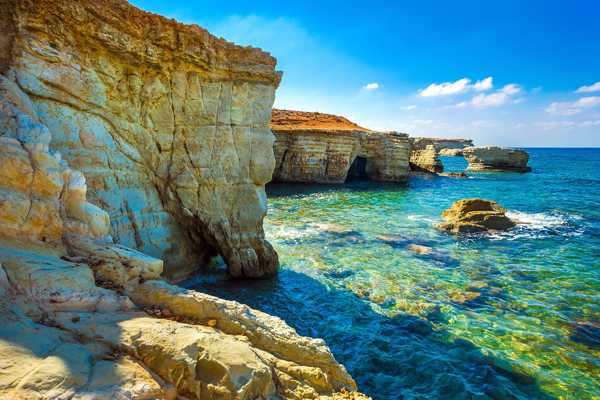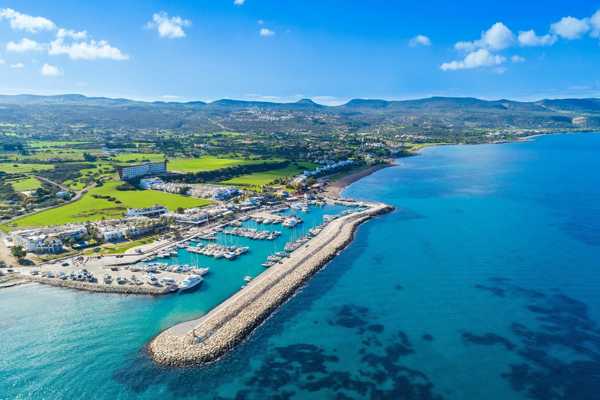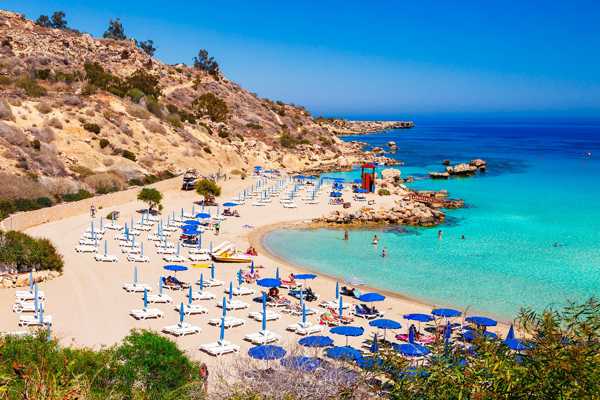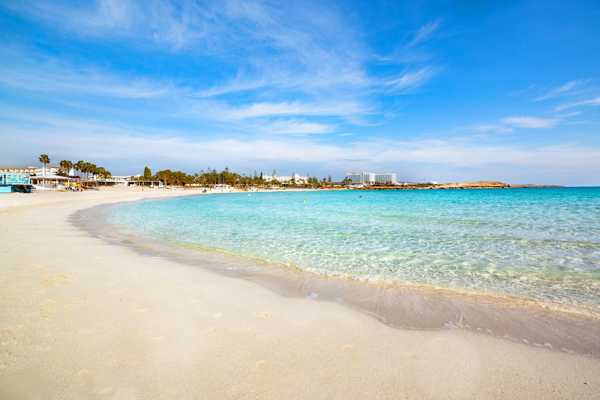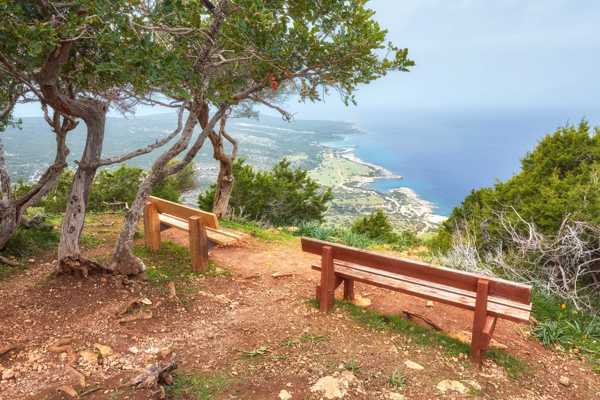Remarkable ancient sites in Paphos lie in vast, barren grounds around the south-western coast of Cyprus. Some of the most outstanding archaeological finds make up a significant part of the landscape just north of Paphos Harbour, while others are somewhat hidden from main routes but equally important and worth discovering during your visit.
Start your day of historical exploration in Paphos at the archaeological park for a wealth of ruins dating back to ancient times, including the renowned and well-preserved floor mosaics of Phasos that are housed in several ancient villas. To guide you on your discoveries, here are our top picks of amazing sites in Paphos to take you back in time in this antique corner of Cyprus.
- 1
Nea Paphos and Paphos Archaeological Park
Ancient ruins in a modern city
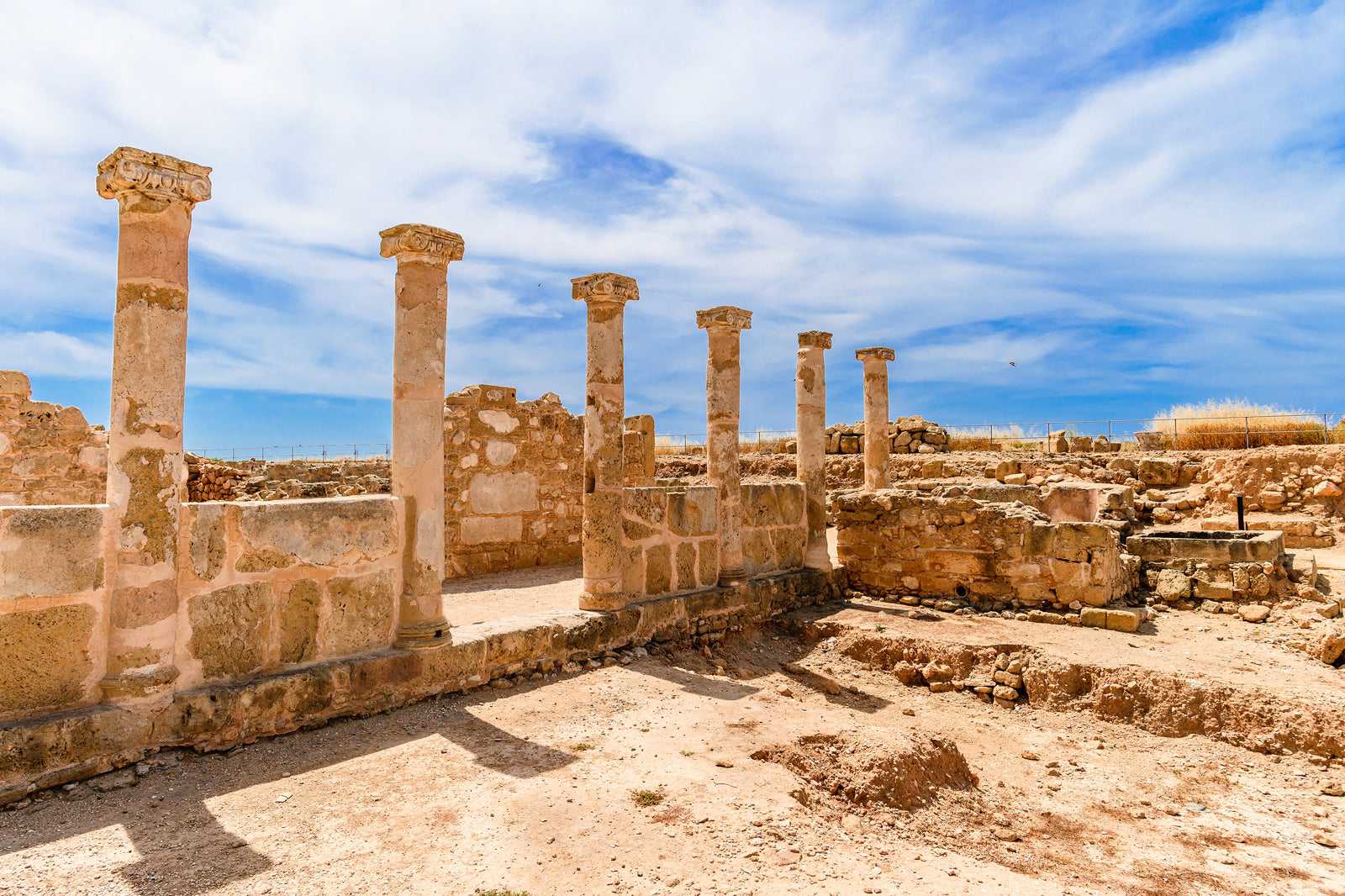
- Sejarah
- Foto
Nea Paphos (New Paphos) is home to modern features like Paphos Harbour, but its sizable area is peppered with the ancient ruins of Paphos Archaeological Park. Firstly, there’s Paphos Castle that overlooks the marina, from where you can further take the coastal trail to discover the many different sites that date back centuries (expect pretty wildflowers in spring). Further, you’ll come across impressive sites like Paphos Mosaics, House of Dionysus, and Forty Columns Fortress.
Ancient Nea Paphos, also regarded as ‘Aphrodite’s Sacred City’, is part of Kato Paphos, one of the 2 major sites that make up Paphos' archaeological scene. The entrance at Paphos Harbour is unassuming and doesn’t seem to do the site justice, but it’s a portal to an impressive world of the past.
Lokasi: Kato Paphos, Paphos, Cyprus
Buka: 16 September–15 April: daily from 8.30 am to 5 pm. 16 April–15 September: daily from 8.30 am to 7.30 pm
Telepon: +357 26 306 217
Peta - 2
Tombs of the Kings
A vast, scenic seaside necropolis
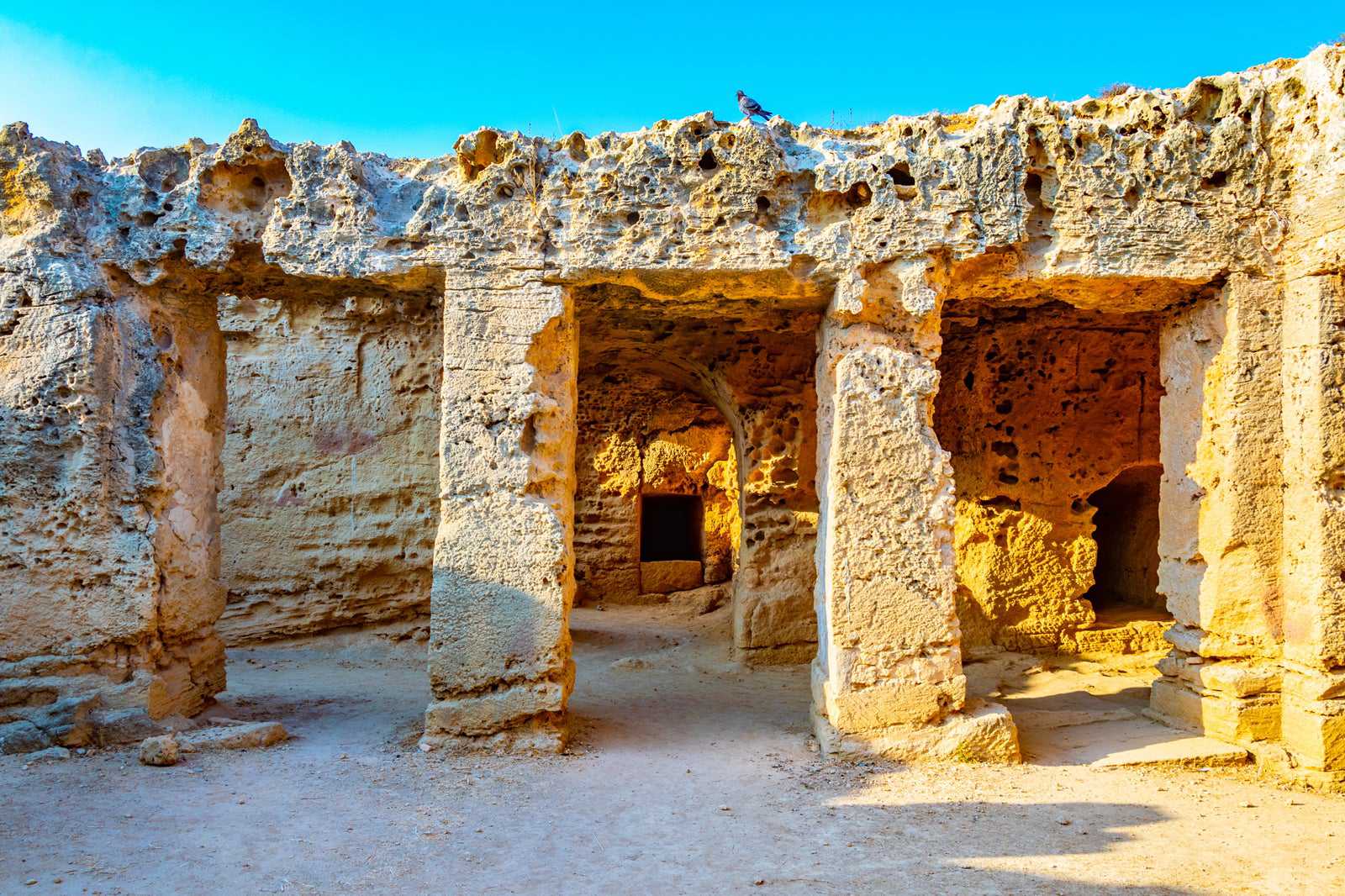
- Sejarah
- Foto
At the entrance to the Tombs of the Kings site in Paphos, many first-timers won’t realise how vast the site is inside. The dirt trails that snake throughout these vast archaeological grounds are quite rugged, which simply augments the explorative vibe of your visit. They lead you to a series of ancient burial sites spread throughout the desolate 320,000-square-metre grounds.
The main underground tombs were carved out of solid rock, with some in the shape of real-life houses and others featuring Doric columns and walls adorned in frescoes. Don’t let the name of the site throw you off though – those buried here were wealthy aristocrats, not royalty. Take in the splendid seascapes as you stroll along the coastal boardwalk.
Lokasi: Tombs of the Kings Ave 63, Chloraka, Cyprus
Buka: Daily from 8.30 am to 5 pm
Telepon: +357 26 306295
Peta - 3
Paphos Castle
Walk in the footsteps of the ancient Ottomans
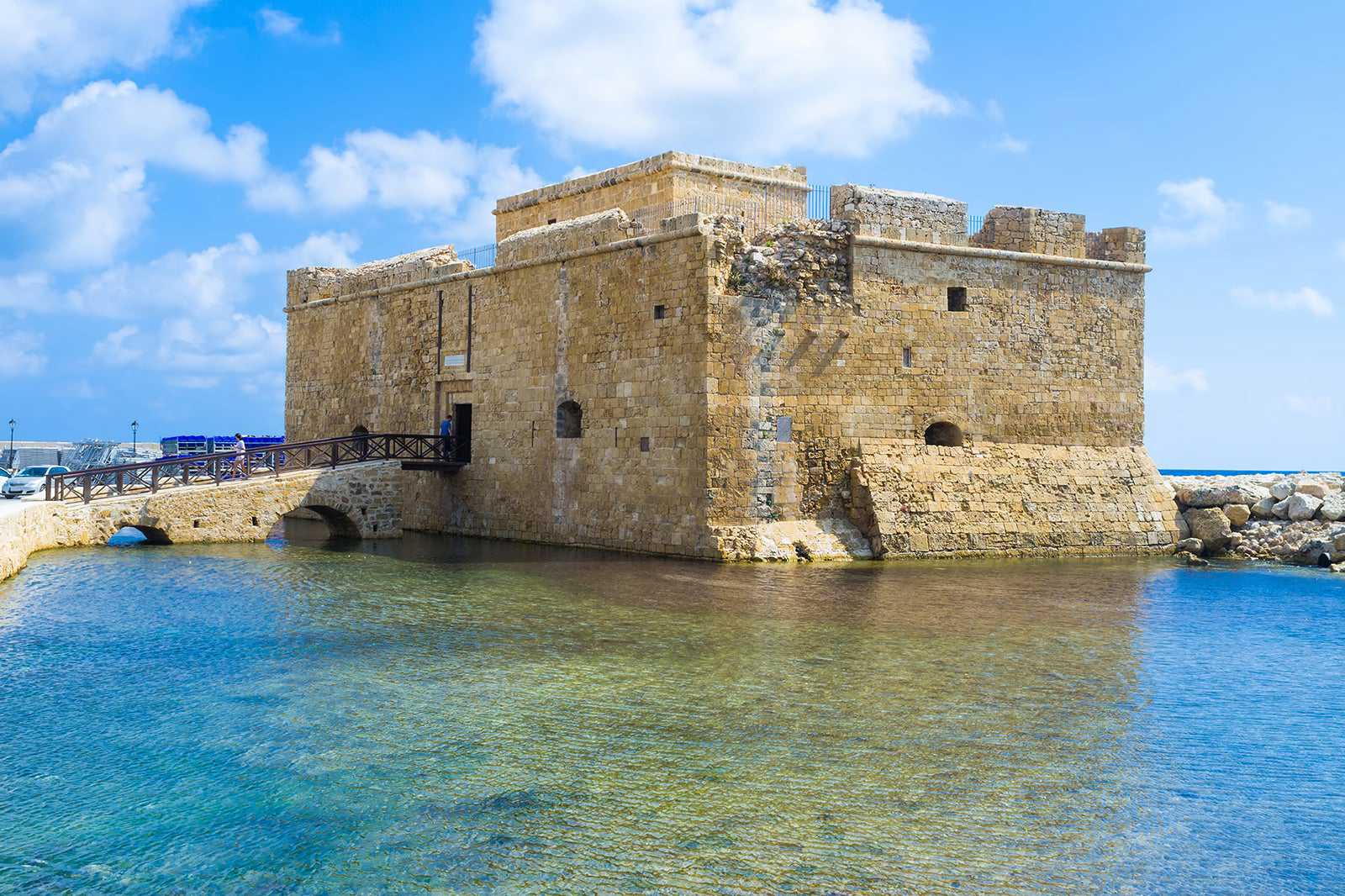
- Budget
- Sejarah
- Foto
Paphos Castle was built as a medieval fort, guarding Paphos Harbour while it was ruled by the Byzantine Empire. The sturdy structure has lived many lives throughout its history, being rebuilt by the Lusignans in the 1200s, then dismantled and rebuilt again by the Ottomans in the 1500s. What travellers see today are the remnants of the Ottoman construction.
Marvel at the huge tower, the grim prison cells and the rooftop battlements where cannons once stood. The cannons are no longer there, unfortunately, as they were removed when the castle received yet another new life in the late 1800s, when it became a British salt storehouse.
Lokasi: Kato Paphos Harbour, Coastal Broadwalk, Paphos, Cyprus
Buka: Mid-April–Mid-September: daily from 8.30 am to 5 pm. Mid-September–Mid-April: daily from 8.30 am to 7.30 pm
Telepon: +357 26 306217
Peta - 4
Saint Neophytos Monastery
Hang out with the monks in a secluded cave

- Budget
- Sejarah
- Foto
Agios Neophytos Monastery was founded in the 12th century by a famous Cyprus monk, Saint Neophytos. Originally just a small cave, the monastery grew until it became a larger cell and chapel, with a refectory and other spaces for the small number of monks who would go on to join Neophytos in his quest for an ascetic lifestyle.
Now, you can see just what these staunch believers’ lives were like within the caves and other rock-hewn buildings as you explore the original structures and museum, which also includes some impressive paintings and frescoes. Thankfully, the Saint Neophytos Monastery is not as remote as it was in Neophytos’s days and you can easily reach the site from the centre of Paphos in a few minutes.
Buka: April–October: daily from 9 am to 1 pm and from 2 pm to 6 pm. November–March: daily from 9 am to 4 pm
Telepon: +357 26 652481
Peta - 5
The Paphos Mosaics
Marvel at some of the finest mosaics in the world
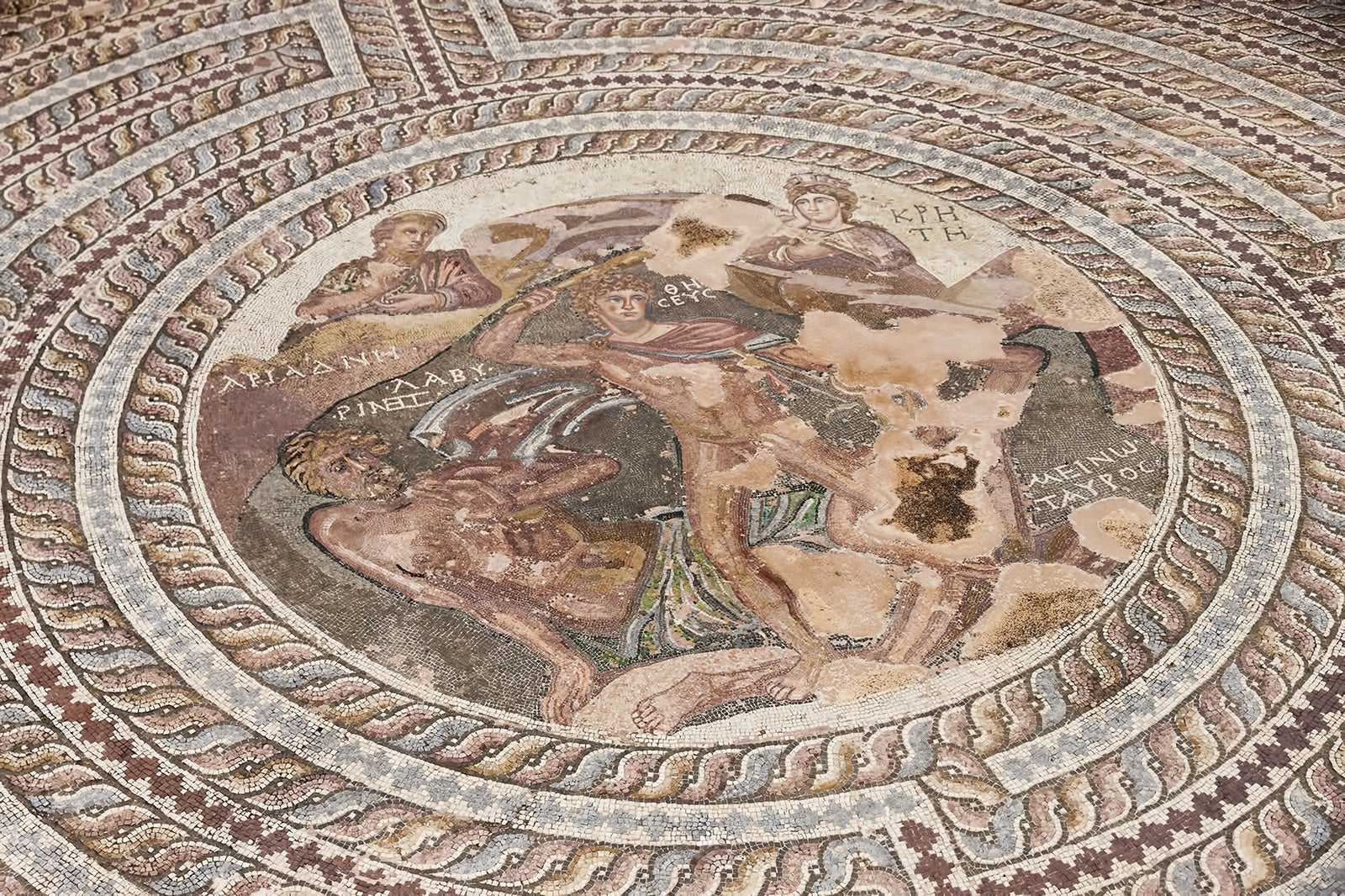
- Budget
- Sejarah
- Foto
The Paphos Mosaics are considered some of the best ancient mosaics in the world, depicting Greek and Roman culture in a way that’s proven invaluable to scholars. The mosaics would have been decorative floor coverings of houses that were constructed in the area in both Hellenistic and Byzantine eras.
Today, travellers see the mosaics from 5 different houses, with each house showing mosaics with different themes, from gods and goddesses to battles and daily life. The mosaics are part of a UNESCO World Heritage site that’s located just a short walk from Paphos Harbour, where you can see the mosaics for a small entry fee.
Lokasi: Pafias Afroditis 19, Paphos 8041, Cyprus
Buka: Daily from 8.30 am to 5 pm
Peta - 6
Agia Kyriaki Chrysopolitissa
Explore one of the oldest Christian churches in the world
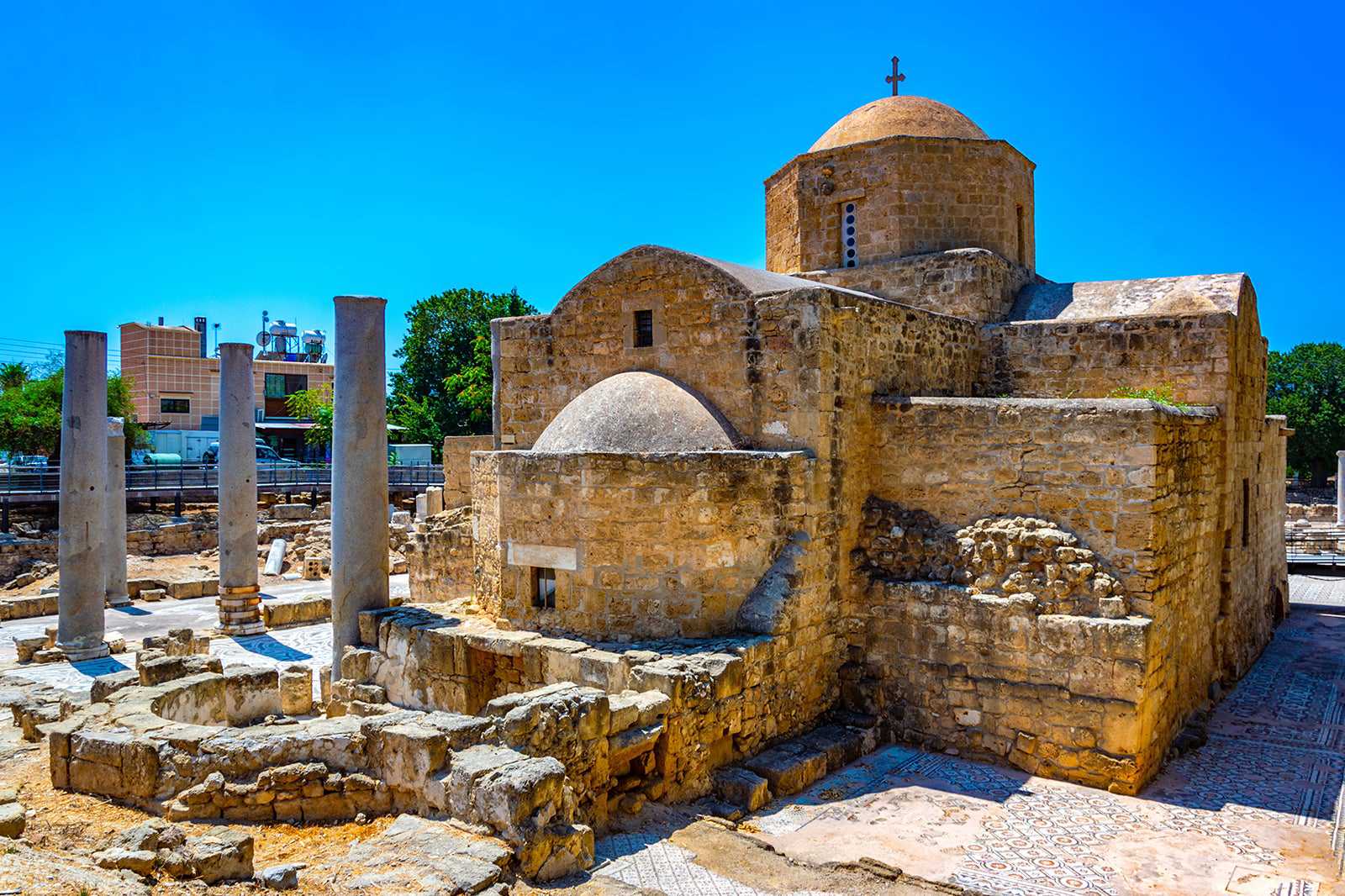
- Budget
- Sejarah
- Foto
Agia Kyriaki Chrysopolitissa is one of the world's functioning churches, hosting Anglican services on Sundays and Wednesdays. However, while the main church dates to 1500 and is certainly worth a look, most travellers find other points of interest around the site.
Agia Kyriaki Chrysopolitissa is part of a complex that also includes a basilica dating from around the 4th century AD and a pillar that, according to tradition, was the site of Saint Paul’s persecution in Paphos. Pilgrims still journey to Saint Paul’s Pillar to see where the Christian missionary was beaten for his efforts. The complex additionally includes an unrelated Ottoman bath archaeological site from a separate period of Paphos’s history.
Lokasi: Paphos, Cyprus
Buka: Daily from 8 am to 4 pm (until 5 pm in winter)
Peta - 7
Agia Solomoni catacombs
Shrine of a lady saint and underground tombs
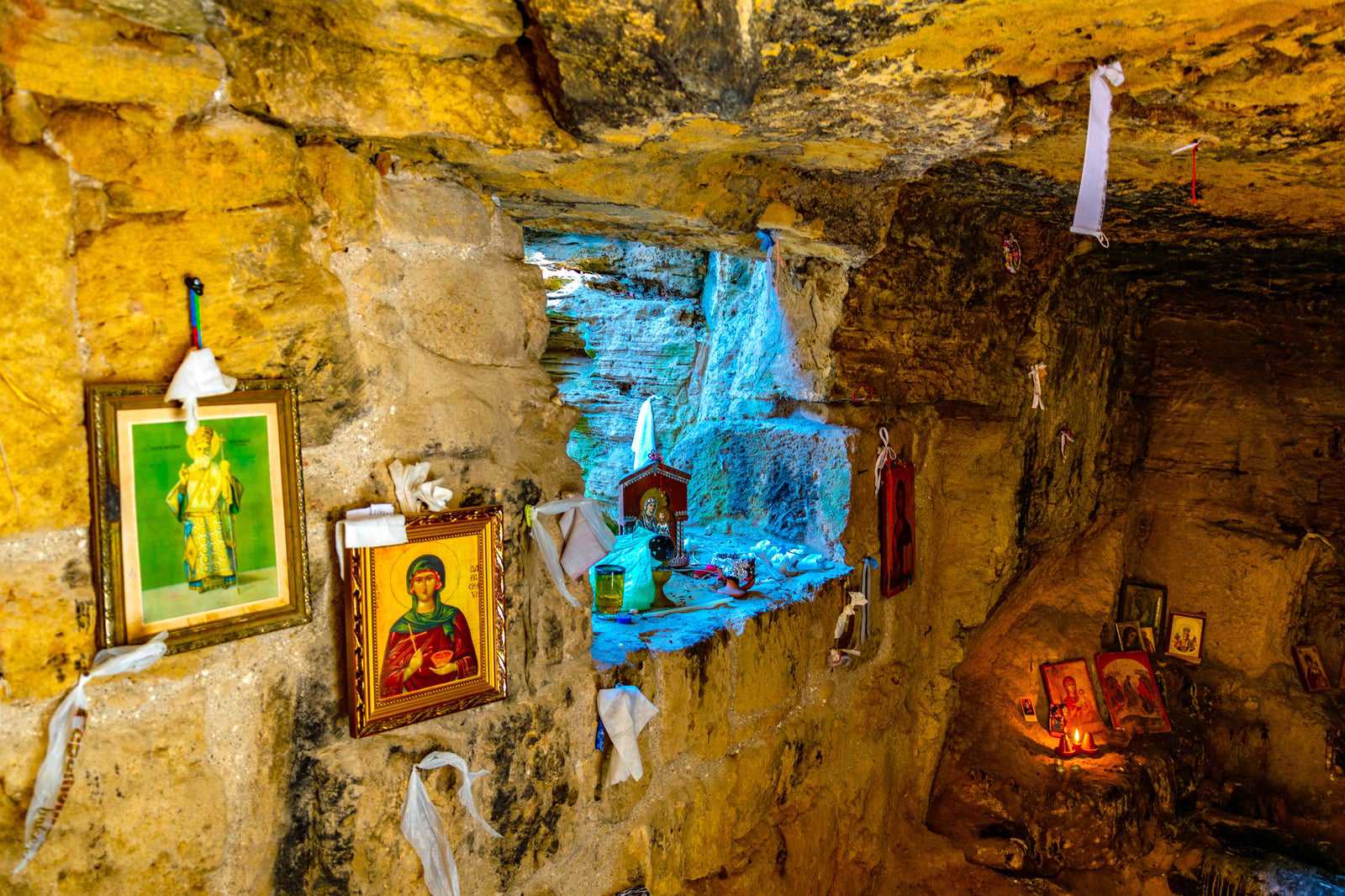
- Budget
- Sejarah
- Foto
The Agia Solomoni catacombs comprise a chapel and a series of underground chamber tombs, some bearing medieval paintings. It’s easy to miss the unassuming site on Apostolou Pavlou Avenue. Most stumble upon it by accident. Look out for a sacred turpentine tree whose branches are entwined in colourful bits and strands of cloth left as offerings to the namesake lady saint.
First, you’ll come across a small courtyard surrounded by 5 stone chambers. One has a spring, while the one to the west is where you’ll find the collection of religious paintings on its walls. Which is the saint’s tomb, you ask? It’s actually in Karpasia, on the far northern side of Cyprus.
Lokasi: Apostolou Pavlou Ave 100, Paphos 8042, Cyprus
Peta - 8
House of Dionysus
Admire the god of wine – on the floor
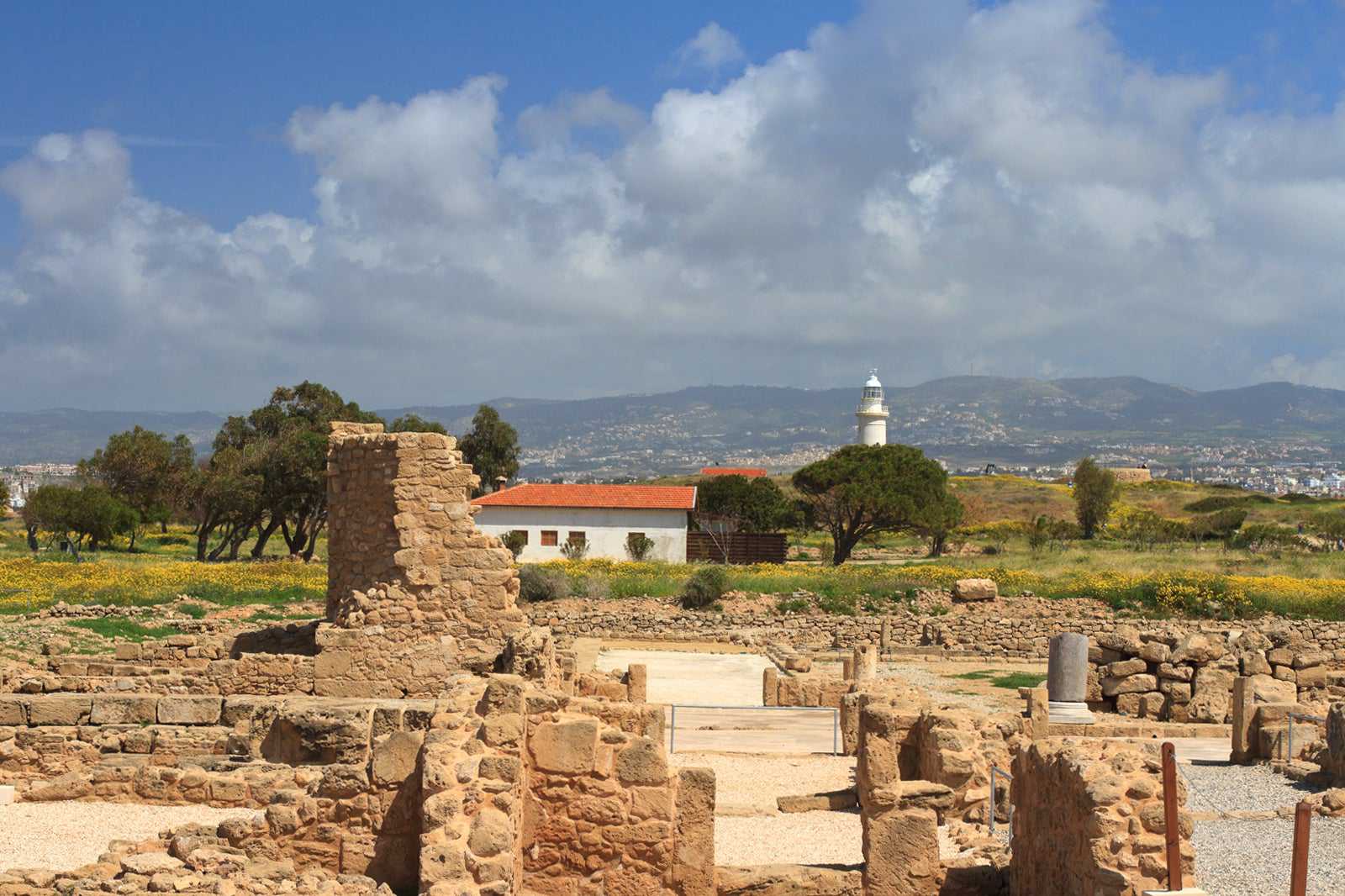
- Sejarah
- Foto
The House of Dionysus is one of the many ancient structures in Paphos Archaeological Park, where you can admire the impressive thematic floor mosaics that Paphos is famous for. Each house is named after the dominant theme of their well-preserved and colourful floor mosaics – the House of Dionysus’ depicts the god of wine.
Besides admiring the immense and highly detailed artwork that was painstakingly created between the 2nd and 4th centuries, a visit to the House of Dionysus is simply a cool respite from the sun. Excavation works continue to be carried out throughout the archaeological park, so consider yourself lucky if your visit coincides with a new find.
Lokasi: Paphos, Cyprus
Buka: Daily from 8.30 am to 5 pm
Peta - 9
Byzantine Church of Agia Paraskevi
A highly ornate Byzantine basilica with 5 domes
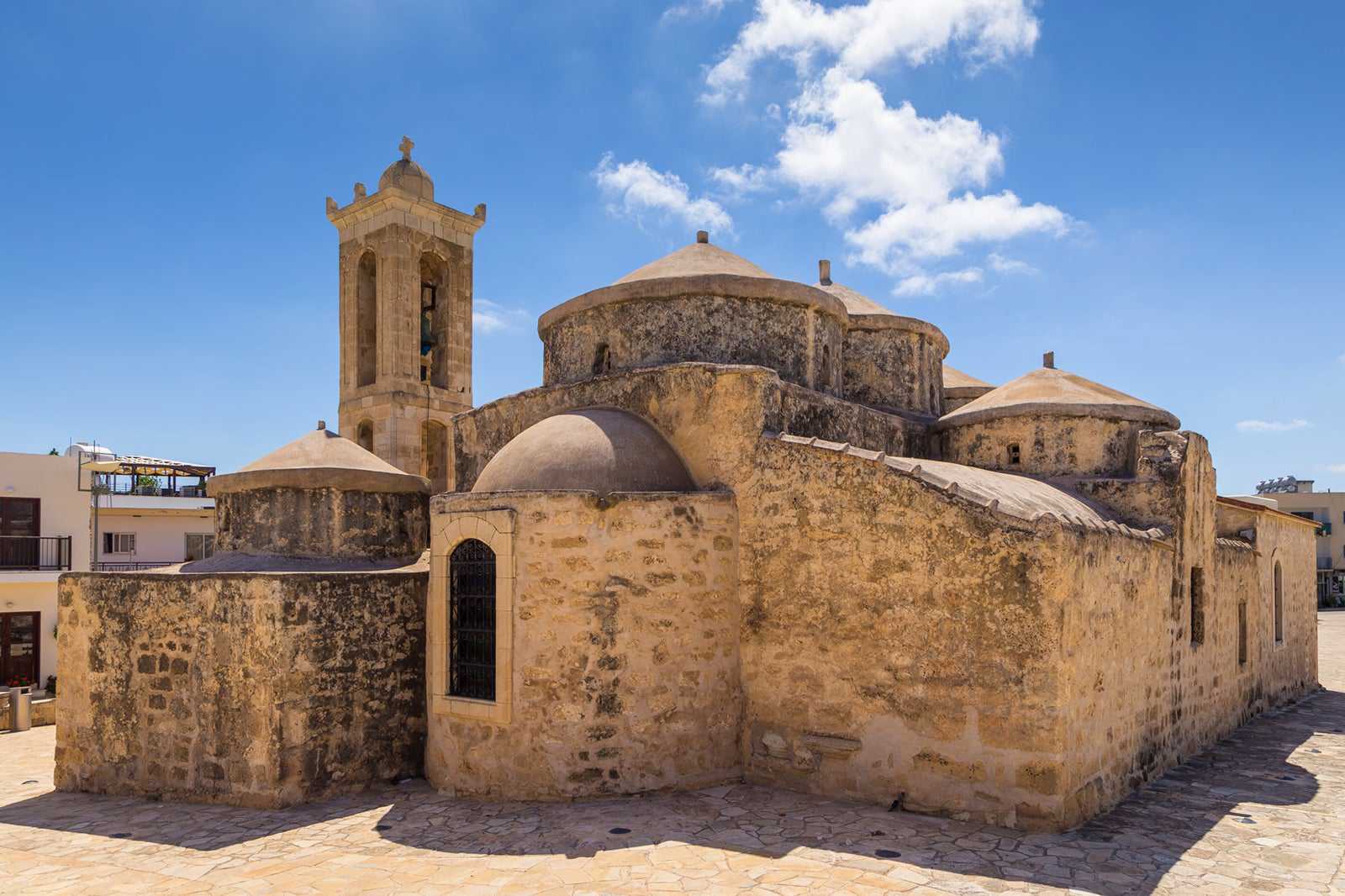
- Sejarah
- Foto
The 9th-century Byzantine Church of Agia Paraskevi is a Greek orthodox basilica in the village of Geroskipou. Its unique architectural features offer great photo ops inside and out. The barrel-vaulted basilica has 5 domes – best viewed from the Agia Paraskevi square (which has a small amphitheatre).
You’ll find 3 aisles and gorgeous interiors adorned with brilliant frescoes that date back to over a millennium. Also, check out the frescoes of the basilica’s dome. Consider yourself lucky if your visit coincides with a wedding, celebrated beautifully both at the church and often in the square.
Lokasi: Agia Paraskevi Square, 1, Yeroskipou 8201, Cyprus
Buka: Monday–Saturday from 8.30 am to 1 pm and from 2 pm to 4.30 pm (closed on Sundays)
Telepon: +357 26 821000
Peta - 10
Roman Odeon
Where dramas were staged in ancient times
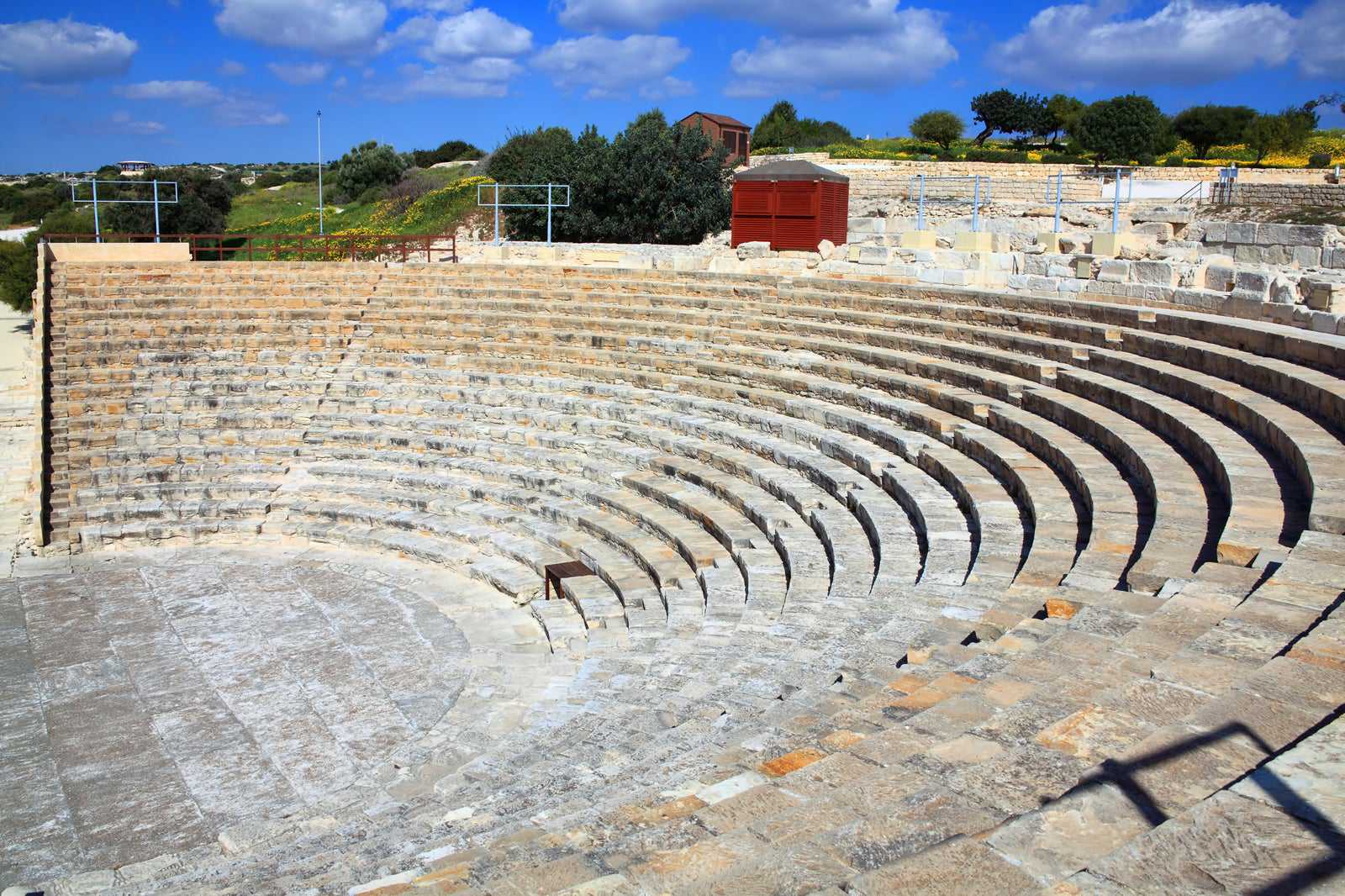
- Sejarah
- Foto
The Paphos Ancient Odeon, or simply the Roman Odeon, is one of the great sites you can discover while exploring Paphos Archaeological Park. It stands out with as an ancient architectural feat, having been built from cut limestone on the slopes of the Fabrica Hill site which itself is peppered with various ancient ruins.
It’s a bit of a hard find, being a bit far north of most of the other ruins within Nea Paphos most stumble upon before finding themselves admiring and exploring the site even more. If there aren’t any studies ongoing, you can walk down and up the 12 rows of stone seats and take in splendid views across the town, with a towering white lighthouse as its backdrop.
Lokasi: Nea Paphos, Paphos, Cyprus
Peta - 11
Church of Panagia Theoskepasti
A rock-perched church in the heart of Kato Paphos
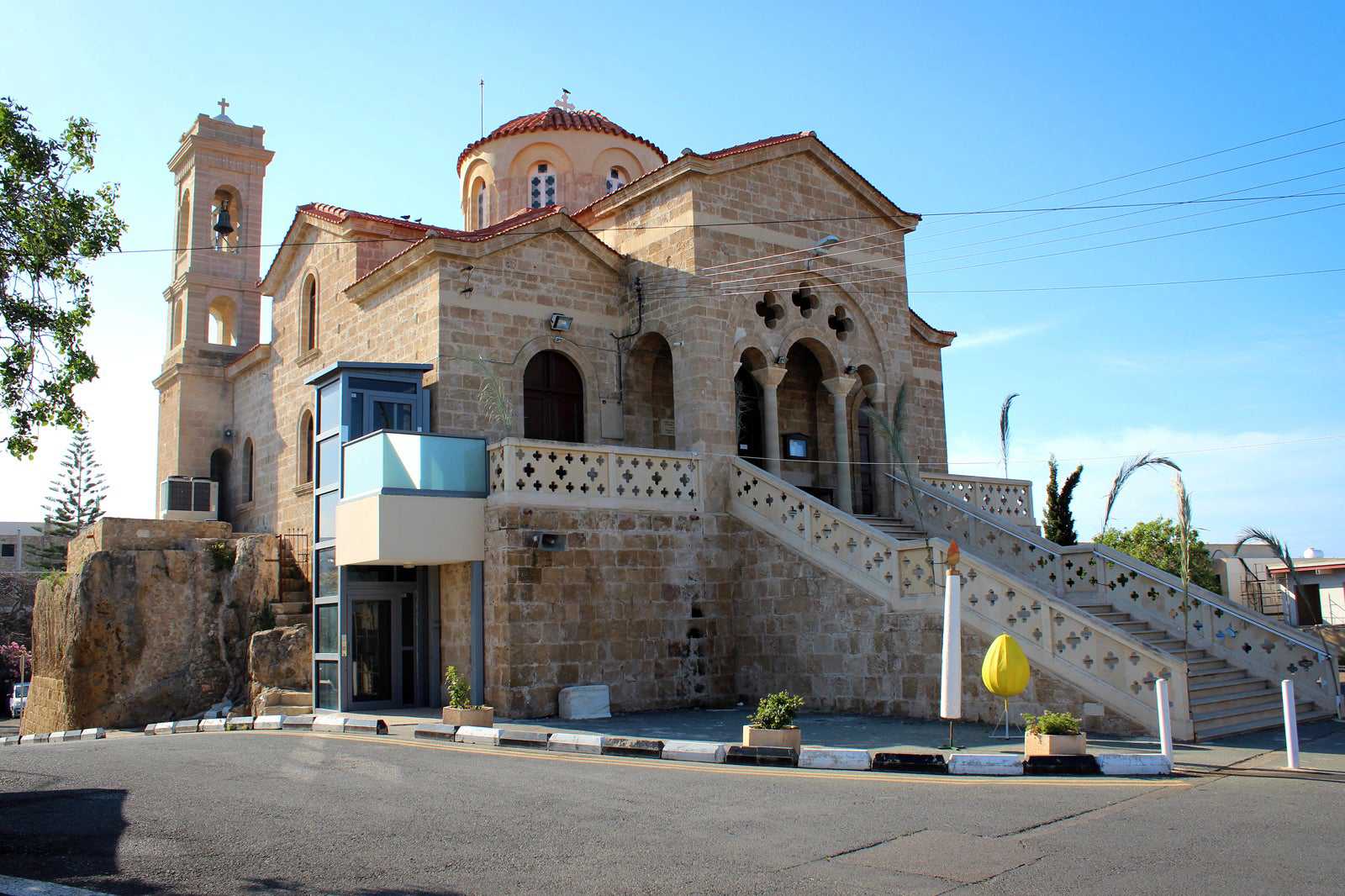
- Sejarah
- Foto
While the Church of Panagia Theoskepasti of today isn’t an ancient ruin as most sites in Kato Paphos, it was actually built over a 10th-century Byzantine church. Even so, most of the architectural features of the old church are meticulously preserved. The church is also very unique – set in a modern neighbourhood street but perched upon a tiny rock base of its own.
Inside, the church is bright, with a huge iconostasis that's worth checking out – there are well over 100 icons in it. In all, the Church of Panagia Theoskepasti is a great visit for a sense of calm, only several minutes’ stroll from the municipal seaside.
Lokasi: Panagias Theoskepastis, Paphos, Cyprus
Telepon: +357 26 937075
Peta - 12
Forty Columns Fortress (Saranta Kolones)
Fragments of a bygone Byzantine castle
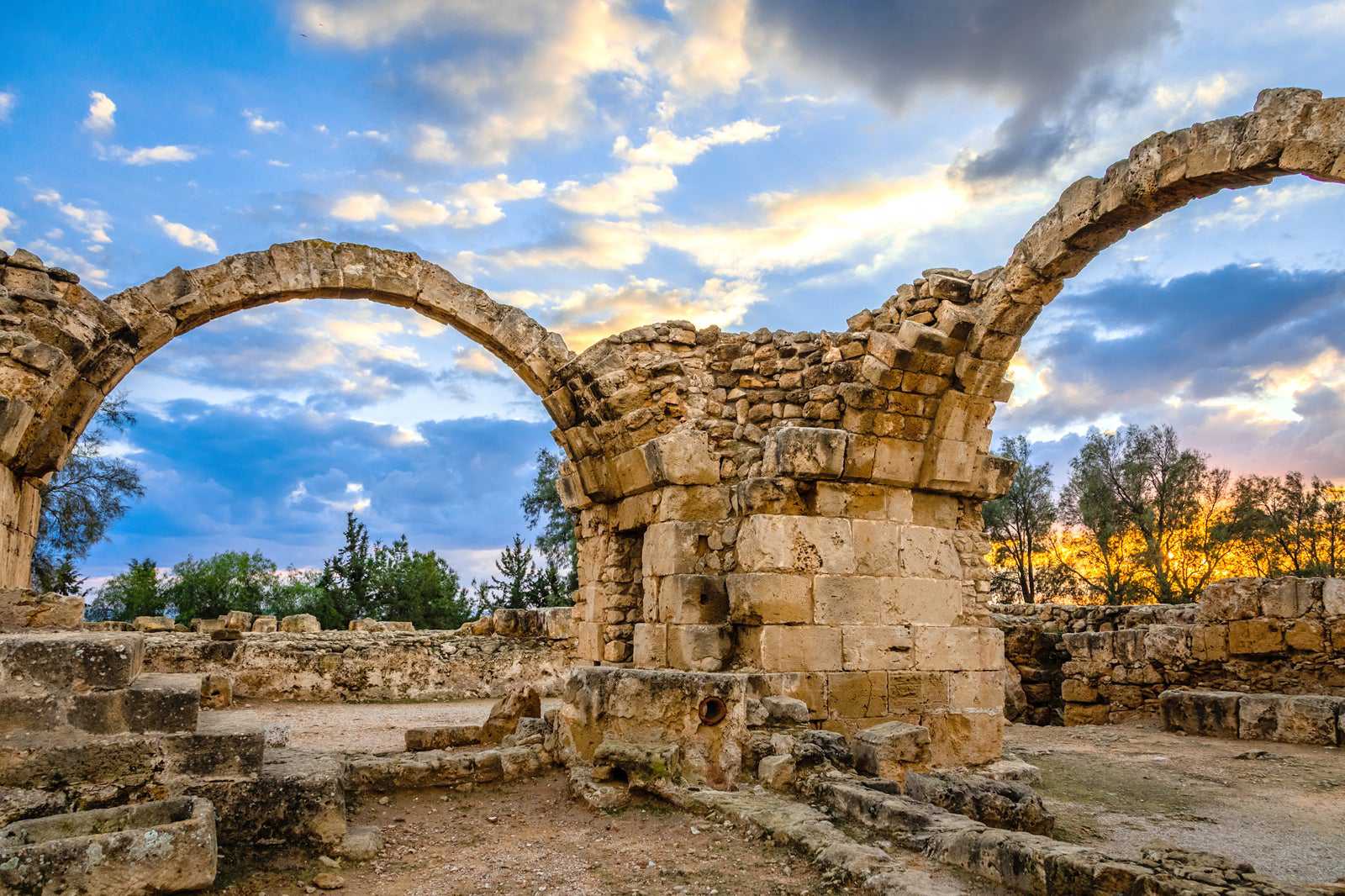
- Budget
- Sejarah
- Foto
Saranta Kolones (Forty Columns Fortress) is what remains of a magnificent 7th-century fortress overlooking Paphos Harbour. The site features a collection of granite pillars (not actually 40 in total) that are widely believed to have been part of a medieval marketplace.
With its thick walls, towers, and moat, the fortified structure was believed to have protected the harbour from raids. That was before most of the fortress were turned into rubble by an earthquake that once shook the island in the 12th century. The vast open grounds are free to visit, but take extra caution when exploring through the rubbles and ruins.
Lokasi: Nea Paphos, Paphos, Cyprus
Telepon: +357 26 306217
Peta - 13
Villa of Theseus
Spot Poseidon and the baby Achilles

- Sejarah
- Foto
The House of Theseus, often called the Villa of Theseus, forms part of the Paphos Archaeological Park, particularly the complex known to house the famous Paphos Mosaics. The 2nd-century Roman villa has over 100 rooms, yet the main attraction lies in its galleries as well as the mosaic floors that date back to various periods – the oldest is from the 3rd century and depicts the mythical Athenian king fighting a minotaur.
If you look closely enough, you can see that the mosaic had been reworked several times, most likely due to damage following a series of historical earthquakes that shook Cyprus. Later-added frescoes depict the ancient Greek sea god and goddess, Poseidon and Amphitrite, as well as a baby Achilles.
Lokasi: Nea Paphos, Paphos, Cyprus
Buka: Daily from 8.30 am to 5 pm
Peta - 14
House of Aion
Admire the rich mosaic floor panels
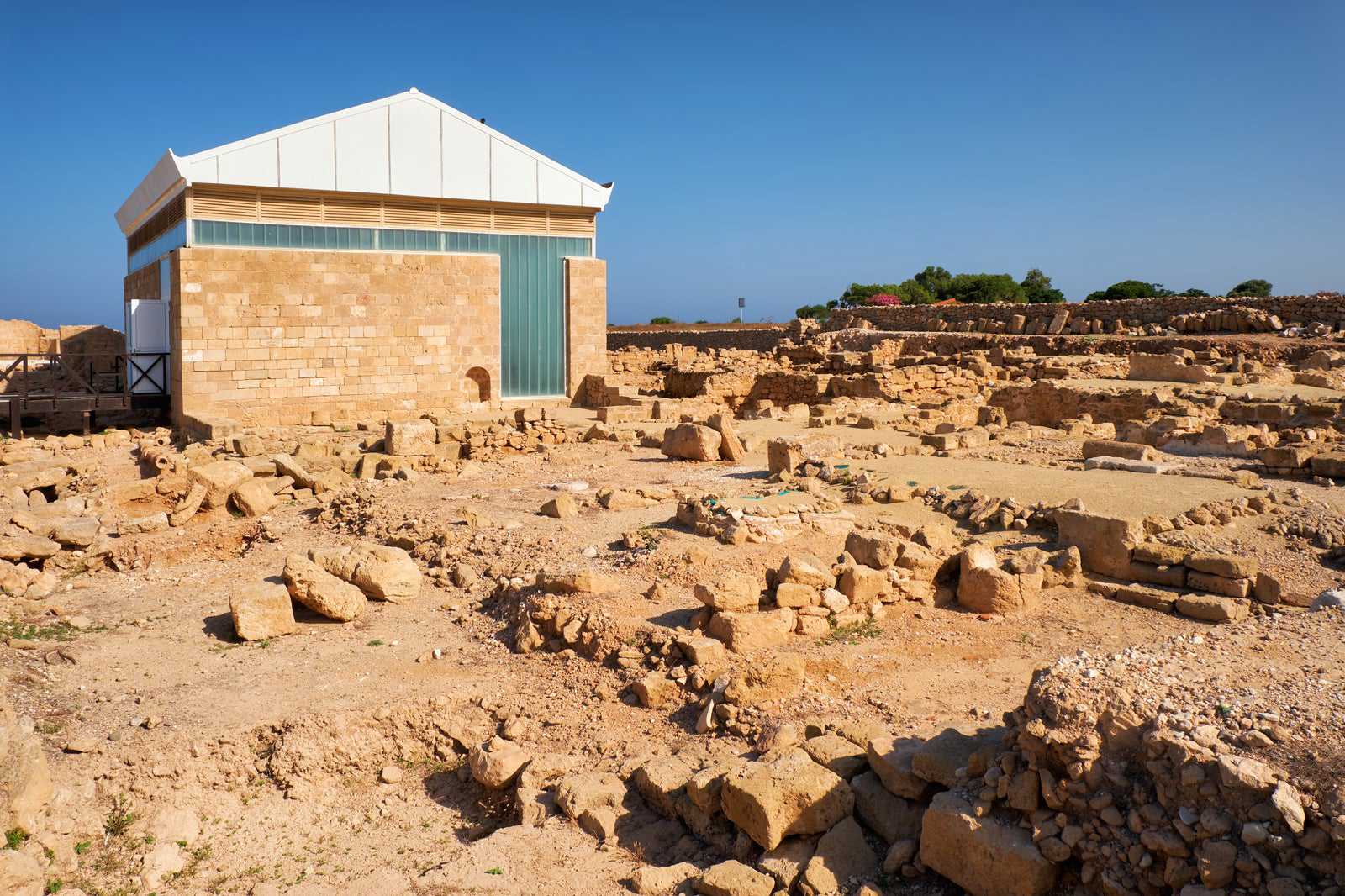
- Sejarah
- Foto
House of Aion makes up one of the sites that house Cyprus’ renowned Paphos Mosaics, and as its name suggests, was named after its mosaics depicting the Hellenistic god of time. The ancient villa sits within the same grounds of the Villa of Theseus but is significantly smaller.
The focal attraction of this 3rd-century villa lies in its main room, where a large central mosaic is made up of 5 panels – each depicting a different scene. Scenes such as Leda and the Swan, Epiphany of Dionysus, Cassiopeia and the Nereids, and the Flaying of Marsyas make up the panels, while Aion makes up the central composition.
Lokasi: Nea Paphos, Paphos, Cyprus
Buka: Daily from 8.30 am to 5 pm
Telepon: +357 26 818173
Peta - 15
Basilica of Panagia Limeniotissa
Barren ruins of an early Christian church

- Budget
- Sejarah
- Foto
The Basilica of Panagia Limeniotissa is one of the first historical ruins you’ll see by Paphos Harbour, right at the entrance of Paphos Archaeological Park and nearby Paphos Castle. It’s also most likely the first spot you’ll stop by on your historical exploration of the park, adjacent a car park and with plenty of harbour shops and cafes just a short stroll away.
Even though the other ancient ruins spread throughout the vast park often get most of the spotlight, this 5th-century basilica is a fine example of early Christian architecture, dating back to Cyprus’ Byzantine era. A stroll through the ruin’s grounds lets you observe its 3 aisles, rows of standing and toppled marble columns, as well as just a few parts of its mosaic floors.
Lokasi: Nea Paphos, Paphos, Cyprus
Buka: Daily from 8.30 am to 5 pm
Telepon: +357 26 306217
Peta


